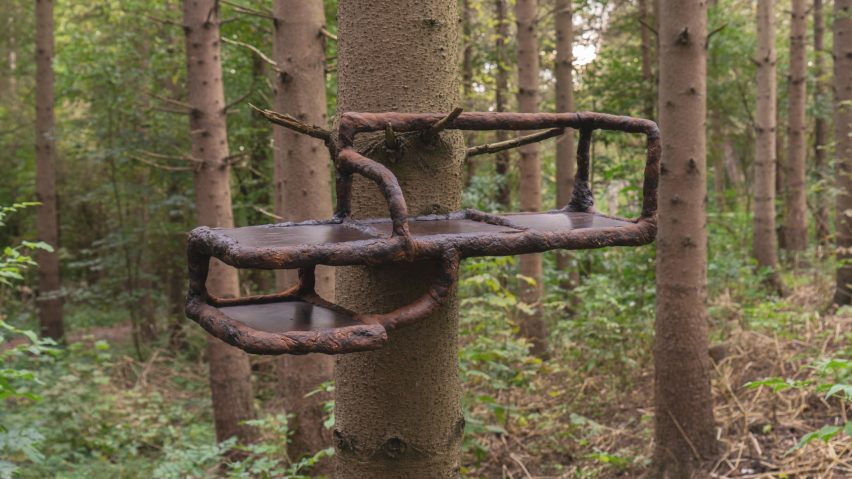German designer Basse Stittgen has developed two methods for transforming lignin, an under-used plant-based polymer, into functional objects.
Stittgen's Tree-ism project explores how lignin and cellulose, both derived from European Spruce trees, can be combined to create "remade wood" products.
The results include a polymer clay, which the designer has moulded into playful furniture objects, along with a heat-pressed bioplastic that was used to make plates.
Both lignin and cellulose are polymers that can be extracted from wood pulp. But while cellulose is widely used in manufacturing, lignin is typically treated as a waste product.
Stittgen wants to show how this brown, fibrous substance could be used as a design material.
"Cellulose and lignin are the two most abundant organic polymers on earth," the designer said.
"While one is used excessively in a host of different industries such as the paper and textile industry, the other stays largely unexplored, remaining an underutilised byproduct," he continued.
"Lignin is mostly burned in thermal waste plants for the production of energy, with all the consequential negative emissions."
Stittgen believes that lignin's rich colour and tactile quality are features that should be valued because they result in objects that retain the look and feel of tree bark.
This led him to explore applications for cellulose that don't require the lignin to be removed.
"It is difficult to hold a piece of paper and see a tree," Stittgen said.
"The objects made in this project are meant to evoke mindfulness and a connection to the source of their material, when held they can hopefully remind you of a tree, the rough texture of the bark, the year rings that keep track of the seasons and the landscape in which the tree grew."
The polymer clay was made by combining lignin sulfonate (the material's water-soluble form) with cellulose fibres and water, resulting in a putty that can be hand sculpted into different forms.
His thermoformed bioplastic was meanwhile made purely from lignin and cellulose. These are mixed together and heat-pressed in a mould at 180° Celsius, with around 10 tons of pressure, to create a sheet material.
"Just like in a tree, lignin binds the cellulose fibres to each other, therefore creating a remade wood bioplastic," said Stittgen.
The designer has explored different ways of combining the two different material products. His designs include an ambiguous shelving design and lamps that resemble forest mushrooms.
He has also developed a third use for lignin. By mixing it with gum arabic, orange turpentine, linseed oil and water, he has developed an ink that can be used to silk-screen print onto cellulose-based paper.
This ink can also be used as a coating to make his bioplastic objects water-resistant.
Stittgen is becoming known for his innovative use of waste biomaterials. Previous projects include Blood Related, which created objects from animal blood, and a tableware project called How Do You Like Your Eggs?
As with these other projects, Stittgen plans to continue exploring the potential of lignin. "The research is ongoing and there will still be many more objects to come," he added.

